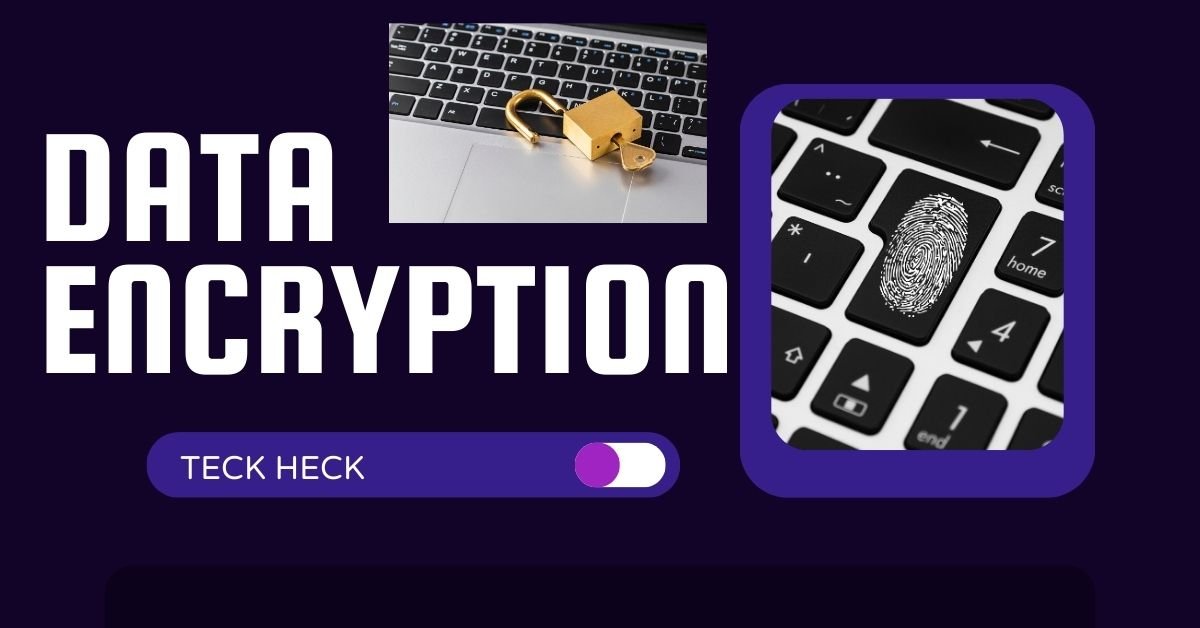
For what reason is data encryption deemed necessary for data security?
Recognizing the types and Significance of data encryption
Overview of data encryption:
One of the most important technologies for protecting digital data which prevents unauthorized users from reading it. It is used to safeguard private information on a variety of platforms, such as cloud storage, email and websites. Using algorithms and cryptographic keys, encryption converts plaintext into ciphertext, protecting the integrity and privacy of data. The concepts, kinds, and significance of data in safeguarding digital information are all covered in detail in this article.
Data encryption: what is it?
Data encryption is the process of employing a cryptographic key and an algorithm to transform readable, plain data (called plaintext) into an unreadable format (called ciphertext). Restoring the data to its original format is only possible for authorized individuals who possess the appropriate decryption key. Protecting sensitive information from unwanted access is the main objective, regardless of whether it is being used for system-to-system communication, kept in databases, or sent across networks.
Even if hackers get to access the encrypted material, the encryption procedure makes sure they can’t read or use it without the right decryption key.
What Makes Data Encryption Crucial?
Protection of Privacy: By limiting unwanted access to private and business data, encryption protects the privacy of people and businesses. This is essential for preserving the privacy of medical information, financial records and private correspondence.
Regulation Compliance: A lot of sectors have to abide by data protection laws including HIPAA (Health Insurance Portability and Accountability Act) and GDPR (General Data Protection Regulation). By protecting medical and customer data, encryption assists businesses in adhering to these legal obligations.

Prevention of Data Breaches: One of the best defenses against data breaches is encryption. Without the decryption key, encrypted data cannot be read, even if it is intercepted by hostile parties.
Protecting Online Transactions: Data is essential for protecting e-commerce transactions, online banking, and any correspondence including the sharing of payment details. For instance, SSL/TLS encryption guarantees the privacy of sensitive information, including credit card data, while it is being transmitted.
Data Encryption Types:
Symmetric and asymmetric encryption are the two main forms of encryption.
- The Encryption System
The same key is used for both encryption and decryption in symmetric encryption. Although this approach is quick and effective, it presents a problem with key distribution because the secret key needs to be accessible to both parties. The security of the encrypted data is jeopardized if the key is intercepted.
For instance, the popular symmetric encryption algorithm Advanced Encryption Standard (AES) provides high security.
Advantages:
quick process of encryption and decryption.
effective at encrypting big data sets.
Cons:
It is crucial to maintain keys securely.
danger of someone intercepting the key.
- 2. Data Encryption using Asymmetry
A public key is used for encryption and a private key is used for decryption in asymmetric Data Encryption, sometimes referred to as public-key cryptography. While the private key is kept confidential, the public key can be freely disseminated. Data encrypted with the matching public key can only be decrypted by the owner of the private key. Since there is no need to exchange secret keys, this approach is more safe for online communication.
For instance, one of the most widely used asymmetric encryption algorithms for secure communication is RSA (Rivest–Shamir–Adleman).
Advantages:
more secure due to the open sharing of public keys.
removes the requirement for a secret key to be safely distributed.

Cons:
slower than encryption that is symmetric.
computationally demanding.
Cryptography Algorithms
For both symmetric and asymmetric encryption, a number of algorithms are employed. Among the most widely utilized algorithms are:
Advanced Encryption Standard, or AES:
AES is a popular symmetric encryption method in a variety of sectors, including finance and government. AES-256 is the most secure of its several key lengths (128, 192, and 256 bits).
Rivest-Shamir-Adleman, or RSA:
Cryptography using Elliptic Curves (ECC):
ECC is an asymmetric encryption algorithm that is more effective than RSA since it provides good security with lower key lengths. For Internet of Things (IoT) applications and mobile devices, it is growing in popularity.
The Use of Data Encryption
Full Disk Encryption (FDE): FDE encrypts the entire hard disk or storage device, protecting all data on a computer or mobile device. Without the encryption key, the data is safe and unreadable even if the device is lost or stolen.
Data that is encrypted on the sender’s end and only decoded on the recipient’s is known as end-to-end encryption (E2EE). Unencrypted data is crucial for secure messaging apps like WhatsApp or Signal since no third party can access it.
Difficulties:
Despite being a strong tool for data protection, encryption has drawbacks.
Key Management: It’s essential to handle encryption keys properly. Data loss or disclosure may be irreversible if the data decryption key is misplaced or stolen.
Performance Overhead: The processing power needed to encrypt and decrypt data particularly in asymmetric encryption, can cause encryption to slow down systems.
Complexity of Compliance: Different countries may have different encryption requirements. When employing encryption techniques, organizations need to make sure they are in compliance with both national and international laws.

In summary:
Data encryption is a crucial part of cybersecurity since it protects private data from breaches, illegal access, and cyberattacks. Strong encryption techniques adapted to particular use cases and legal restrictions are crucial, whether symmetric or asymmetric encryption is used. The importance of encryption in preserving security and privacy will only increase with the volume of data being transferred and stored online, making it essential for both individuals and businesses.
The Applications of Encryption Algorithms
The symmetric encryption algorithm known as AES (Advanced Encryption Standard) is frequently used to protect data. Key sizes of 128, 192, and 256 bits are supported. For high-level security, AES-256 is frequently utilized with a 256-bit key. Applications such as file storage, banking transactions, and government communications all employ AES to secure data.
Rivest-Shamir-Adleman, or RSA: A public key is used for encryption and a private key is used for decryption in the RSA algorithm, which is asymmetric. Secure email systems, SSL/TLS certificates, and digital signatures all make extensive use of it.
The asymmetric encryption method known as Elliptic Curve Cryptography, or ECC, provides strong security with comparatively small key sizes.




